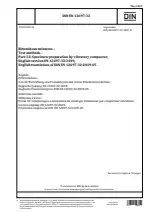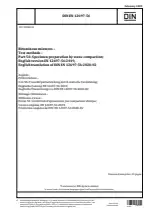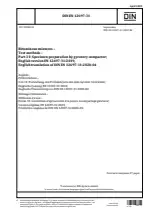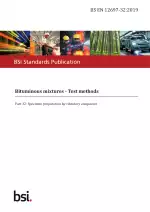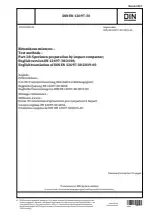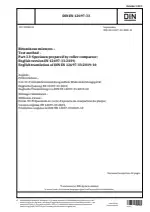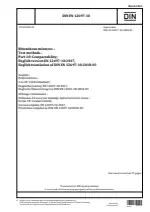Bituminous Mixtures - Test Methods - Part 32: Specimen Preparation by Vibratory Compactor
Also Known As:
The standard DIN EN 12697-32 provides guidelines for preparing bituminous test specimens using a vibratory compaction technique. It is specifically designed for loose mixtures and cores. The purpose of this standard is twofold: to establish a refusal density for a bituminous mixture and to determine the ease of compaction, as outlined in EN 12697-10.
By following the procedures outlined in this standard, engineers and technicians can ensure consistent and reliable results during laboratory testing of bituminous mixtures. The use of a vibratory compactor allows for more efficient and effective specimen compaction. This is important because the density of bituminous mixtures influences their performance and durability.
The standard provides detailed instructions on the equipment and procedure to be followed for preparing test specimens. It specifies the frequency and amplitude of vibration, the number of passes, and the compaction time. These parameters are crucial to achieve the desired density and compaction characteristics. By adhering to the guidelines set forth in this standard, technicians can ensure that the test results accurately reflect the performance of the bituminous mixtures in real-life applications.
| Descriptors | Asphalts, Compacting, Construction, Construction materials, Definitions, Density, Design, Determination, Drill cores, Hot mix asphalts, Laboratory testing, Measurement, Measuring instruments, Measuring techniques, Mechanical properties, Physical properties, Road construction, Specimen preparation, Testing, Thickness, Thickness measurement |
| ICS Codes | 93.080.20 - Road construction materials |
| Language(s) | English |
| File Size | 1.7 MB |

